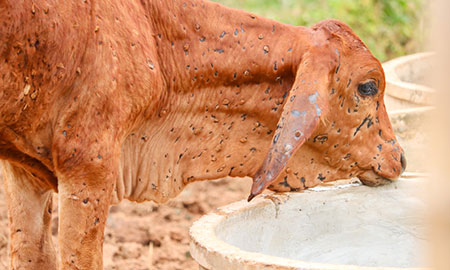



Article by: Hari Yellina
Government biosecurity specialists have warned that the discovery of lumpy skin disorder in northern Australia will likely result in cattle movements being halted. Barricades, comparable to COVID closures, would be regarded an effective approach to isolate diseased states. Cattle purchasing and selling would be brought to a halt, according to agents, farmers, and consultants. Thousands of cattle cross the NSW/Queensland border every day, either to be fattened and backgrounded in paddocks or to be sold to feedlots and processors. Likewise, trading between the Northern Territory and South Australia is flourishing. In recent years, a large number of Victorian weaners have found their way to Queensland.
A one-way flow with northern stock kept locked up would have a lower effect, but even that would produce turmoil. Nonetheless, many people acknowledge that containing such a devastating disease may be important. The export of skins, milk, and a variety of bovine byproducts would be halted if lumpy skin was detected, according to Andrew Tongue, deputy secretary of biosecurity and compliance with the Department of Agriculture, Water, and Environment. The Cattle Council of Australia has warned that it could lead to the closure of major export markets for boxed beef. The industry’s response to this threat, according to President Markus Rathsmann, will be the most important biosecurity policy decision in decades. It would have ramifications throughout the cattle supply chain.
Dr Mark Schipp, Australia’s chief veterinary officer, said it was critical that veterinarians, cattle producers, associated livestock industry personnel, indigenous rangers, and the wider community were vigilant and could identify the disease. He is currently in Indonesia with a team of Australian experts helping to suppress the disease’s spread. Experts say that surveillance is now essential. Any delay in isolating a case will be “deadly,” as the disease is extremely infectious and eradication is nearly difficult. Biting insects such as flies, mosquitoes, and possibly ticks are the primary carriers of the disease. Fomites can also spread the disease through contaminated equipment and, in some situations, direct contact between animals. It poses no threat to human or other livestock health. Fever, depression, and distinctive skin nodules are all symptoms of infection. There may be a significant drop in milk production as well as abortion in pregnant animals.